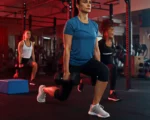The bench press is one of the most fundamental lifts in the world of strength training. Whether you’re a seasoned lifter or just starting your fitness journey, getting this movement right is crucial for building upper body strength while minimizing the risk of injury. Let’s break down the perfect bench press technique step by step to help you lift safely, efficiently, and effectively.
The Importance of Technique
The bench press may seem straightforward, but subtle mistakes can make a significant difference in your progress. Good form ensures optimal muscle engagement, injury prevention, and the ability to lift heavier over time. Consistency in your setup and execution is essential.
Step 1 Setting Up for Success
Hand Placement
Your grip is the foundation of a proper bench press. Follow these guidelines for the best results:
- Grip Width: Place your hands around 1.5 times your shoulder width apart. This ensures optimal chest muscle activation while protecting your shoulders from strain.
- Even Placement: Use the markings on the barbell to ensure your hands are evenly positioned. Uneven placement can lead to imbalances when lifting.
- Grip Technique: Allow the bar to sit securely in the meat of your palm, not in your fingers, to stabilize your wrists and prevent strain. Keep your wrists neutral rather than extended to avoid discomfort.
Positioning on the Bench
How you position your body on the bench can determine the effectiveness of your lift:
- Shoulder Blade Retraction: Pull your shoulder blades together and press them firmly into the bench. This stabilizes your upper body and prevents unnecessary movement.
- Slight Lower Back Arch: Keep a natural arch in your lower back. This helps maintain tension in your core and protects your shoulders. Avoid exaggerated arches unless competing in powerlifting.
- Foot Placement: Push your feet firmly into the ground. You can either keep them flat or pull them slightly under you to create tension in your legs, providing extra stability and force during the press.
Step 2 The Execution
Once your setup is stable, it’s time to perform the movement itself.
Unracking the Bar
- Spotter Required: Always use a spotter when lifting heavy. They’re there to help you unrack and rerack the bar safely.
- Maintain Tightness: When unracking the bar, avoid losing tension in your shoulder blades. Keep tight as you bring the bar into position above your chest.
Lowering the Bar
- Controlled Descent: Slowly lower the barbell to your chest. Avoid bouncing it off your body; this not only reduces muscle engagement but also increases the risk of injury.
- Arm Angle: Keep your upper arms at a 45-degree angle to your torso. This position optimally recruits your chest muscles while reducing strain on your shoulders.
Pressing the Bar Back Up
- Explosive Push: Drive the bar back up to the starting position in a controlled yet powerful manner.
- Engage Your Body: Use your entire body—from your legs to your upper back—to maximize force and maintain stability throughout the movement.
Step 3 Avoid Common Mistakes
Even experienced lifters can fall into bad habits. Here are some mistakes to watch out for and avoid:
- Uneven Hand Placement: Double-check your grip alignment before every lift to ensure balanced movement.
- Extended Wrists: Keep the bar positioned deeply in your palms to avoid unnecessary strain on your wrists.
- Flared Elbows: Excessive elbow flaring can lead to shoulder injuries. Keep your elbows tucked slightly toward your body.
- Skipping a Spotter: Never attempt heavy lifts without a spotter. They’re critical for both safety and confidence.
- Rushing Your Setup: Take the time to dial in your positioning before each lift. A strong setup sets the foundation for proper execution.
Step 4 Why Setup Matters
Your bench press success starts long before the first rep. A proper setup maximizes muscle recruitment, ensures the safety of your joints, and provides the foundation to lift heavier weights over time. By focusing on every element of your setup—including grip, positioning, and body tension—you’ll not only improve your performance but also reduce the risk of injury.
Final Thoughts
Mastering the bench press is more than just moving heavy weights; it’s about doing so with precision, control, and confidence. Whether building strength, improving athletic performance, or enhancing your physique, the bench press remains a staple exercise with unmatched benefits.
Now that you’re equipped with the knowledge to perfect your form, it’s time to hit the gym and put these techniques into practice. Take your time, start with a manageable weight, and focus on nailing your setup. Over time, consistent effort and attention to detail will lead to incredible progress.
Remember, lifting isn’t just about strength. It’s about smart, safe, and sustained progress. Build a strong foundation today, and you’ll be benching like a pro in no time.








